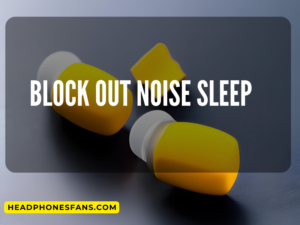A good subwoofer can enhance your listening experience, whether you are a music lover, audiophile or simply someone who loves the deep and resonant sound of bass. You may not be getting the bass that you want from your system. This guide will show you how to improve the quality and depth of your subwoofer.
Understanding Your Subwoofer
Understanding the features and functions of your subwoofer will help you maximize its performance. A subwoofer, also known as a bass speaker, is a loudspeaker that reproduces low-frequency sounds. These frequencies give music its intensity and depth.
It is important to know the type of subwoofer that you own. The Kicker SDR 3X8D2 and the kicker 45TL7R102 , for example, are both excellent options for car speakers, but each delivers a unique sound profile.
What you should know about these types
-
Kicker45TL7R102 Known for high power and deep bass. It is known for its durability and sleek design.
-
Skar 3X8D2 This subwoofer has been praised for its power handling capabilities and clarity of sound. The subwoofer is also praised for its durable design and lasting performance.
Both options are good, but understanding your own sound preferences and the audio system of your car can help you choose the right one.
It is important to use the right wiring
The right wiring can have a significant impact on the sound quality of your subwoofers. Understanding the differences between CL2 wire and CL3 cable will help you maximize the efficiency of your sound system.
CL2 and CL3 speaker wire insulation are both used in different types of installations. Both can effectively carry audio signals, but CL3 has a higher rating for in-wall voltages. This can be useful in certain installations. If your car’s sound system requires a higher voltage, or if you want to future-proof the wiring in your home, then a CL3 may be a better option.
Fine-tuning your Sound
The next step is to fine-tune your audio settings after you have set up your subwoofer correctly and connected it. The equalizer (EQ), the crossover frequency and the gain and the bass boost are all part of this process.
You can adjust the sound to suit your taste with an equalizer. If you listen to classical or EDM, for example, you may want to adjust the EQ settings differently.
Another important setting is the crossover frequency. This determines what frequencies are sent to your subwoofer. A lower crossover frequency (around 80Hz), in general, is better for a more powerful bass response.
The gain and bass boost controls need to be adjusted carefully. It may be tempting to turn these controls up to the max, but this can cause distortion and damage to your subwoofer. Set the gain to
Use the bass boost at a low level.
Do not forget about subwoofer positioning
Positioning your subwoofer can make a big difference in the sound of your bass. There are many schools of thought about subwoofer placement. However, one common suggestion is that it be placed in the trunk of the vehicle facing the back. This will allow you to benefit from the natural acoustics in the car and get a more powerful bass response.
You should remember that every car is different and what works for one may not work for another. You may have to try different placements before you find the perfect spot.
Our guide on wireless vs wired speakers will help you to better understand sound propagation, and the impact it has on your audio experience.
We’ll discuss the importance of amplifying power to achieve a deeper bass in the next section. You’ll also find some useful tips on how to maintain your subwoofer. Stay tuned! Stay tuned!
Your amplifier’s power is a key factor in determining the output of your subwoofer. An amplifier is a device that increases the strength of the audio signals sent by your car stereo to the subwoofer. A higher power usually translates to a louder and more pronounced bass.
There are several types of amplifiers that you can choose from, including 1000 Watt amps 200 Watt RMS amps and a 4000 Watt amp. The power output of each type is different, so the decision should be based on your subwoofer’s power handling capability.
Understanding how to pair speakers with amps will help you get the best sound quality without damaging your audio equipment. A mismatch between an amplifier and subwoofer may result in poor sound and equipment failure.
Using Sound Deadening Materials
Interiors of cars are full of surfaces which can reflect sound, distort it, and cause a less-than-ideal audio experience. Sound deadening materials can be used in your vehicle to help combat this problem. These materials reduce the vibrations produced by your subwoofer. This results in a deeper, clearer bass sound.
These materials will not only improve the sound of your car’s audio system, but also help reduce noise levels inside. Sound deadening materials are a good investment if you have noticed that the sound of your car’s audio system is better when it is stationary than when in motion.
Seal or Ported: Subwoofer enclosures?
It is also important to consider the type of enclosure that your subwoofer will be housed in. This can make a big difference in its bass output. Subwoofer enclosures are available in two different types: sealed and vented.
-
Sealed Boxes : These boxes are completely sealed, so no air can escape. The result is a precise, clean bass response. A sealed enclosure is the best choice if you like a tight, accurate bass or if you enjoy music genres such as jazz or classical.
-
Enclosures with Ports: These enclosures have a vent or port that allows air to escape. This results in a louder, deeper bass. A ported enclosure is a good choice if you enjoy bass-heavy genres like EDM or hip-hop.
The type of music that you listen to and your personal taste will determine whether or not you choose a sealed enclosure.
Capacitors: Investing in them
A stiffening or capacitor is a device which stores energy. It then releases this very quickly into your amplifier. This is especially useful for bass notes that require a large amount of power.
A capacitor could be the answer if you notice that your lights dim during songs with heavy bass or if your amplifier struggles to keep up.
We’ll finish this guide with some tips on how to maintain your subwoofer, and a few recommendations for improving the bass output. Stay tuned to learn more about low-frequency sounds.” “## Subwoofer Maintenance Tips
When it comes to getting your subwoofer to produce the best bass, maintenance is essential. Regularly check your subwoofer as well as the rest of your audio system to make sure that it is working properly.
-
Clean the subwoofer Over time, dust will accumulate in your subwoofer and can negatively affect sound quality. To keep your subwoofer performing at its best, it’s essential to clean it regularly.
-
Check your wiring: Electrical problems can lead to a number of issues, including the lack of bass. Check the wiring on your amplifier and subwoofer to ensure there aren’t any loose or frayed cables.
-
Inspection If you notice that your subwoofer is not sounding the same as it did before, it’s time to check for damage. Watch out for potential problems. Wear and tear will gradually reduce the sound quality.
Consistent maintenance will not only improve the sound quality, but also extend the life of your audio equipment.
Finding the Perfect Balance
To achieve a satisfying, deep bass in your vehicle, you need to do more than simply turn up the volume. The right balance is required between the equipment and settings with regular maintenance.
The subwoofer is one of the most important elements to take into consideration. There are many subwoofers on the market. Some of the most popular include the kicker 45TL7R102 or kicker CS. These are both known for their excellent performance and bass output.
Every detail is important to sound quality. From the technicalities behind headphone dynamic drivers to understanding the importance of the CL2 vs. CL3 wire when wiring your sound system.
Keeping in mind the differences between noise-isolating and noise-cancelling headphones can also make it easier to decide whether to make your own audio experience as rich as the sound system of your car.
It may take some effort to get deep bass out of your subwoofer, but it will pay off in a more immersive listening experience. This guide will help you achieve the punchy, deep bass you desire.
It’s not all about the volume. You want to find the right balance for your system so you can enjoy your music in the best way possible.

Hey there mobile audio lovers! My name is Darlene R, founder and chief editor at headphonesfans.com. Ask any mobile audio fanatic, installer, or company rep what makes a good car speaker, sub or amp, or, better yet, why he or she prefers a certain brand over another, and be prepared to endure a litany of opinions, viewpoints, and passion-fueled perspectives. To be honest, mobile audio shopping can be a daunting task without a guide, so I’ve assembled what I feel are the best products to consider to make things easier for you. Welcome headphonesfans.com!




